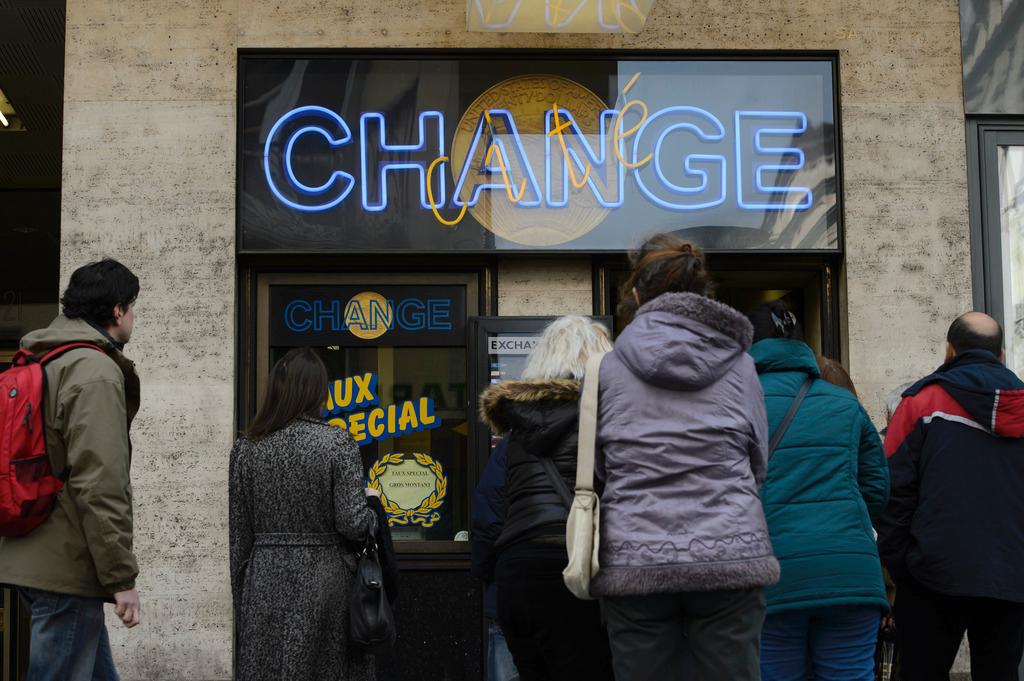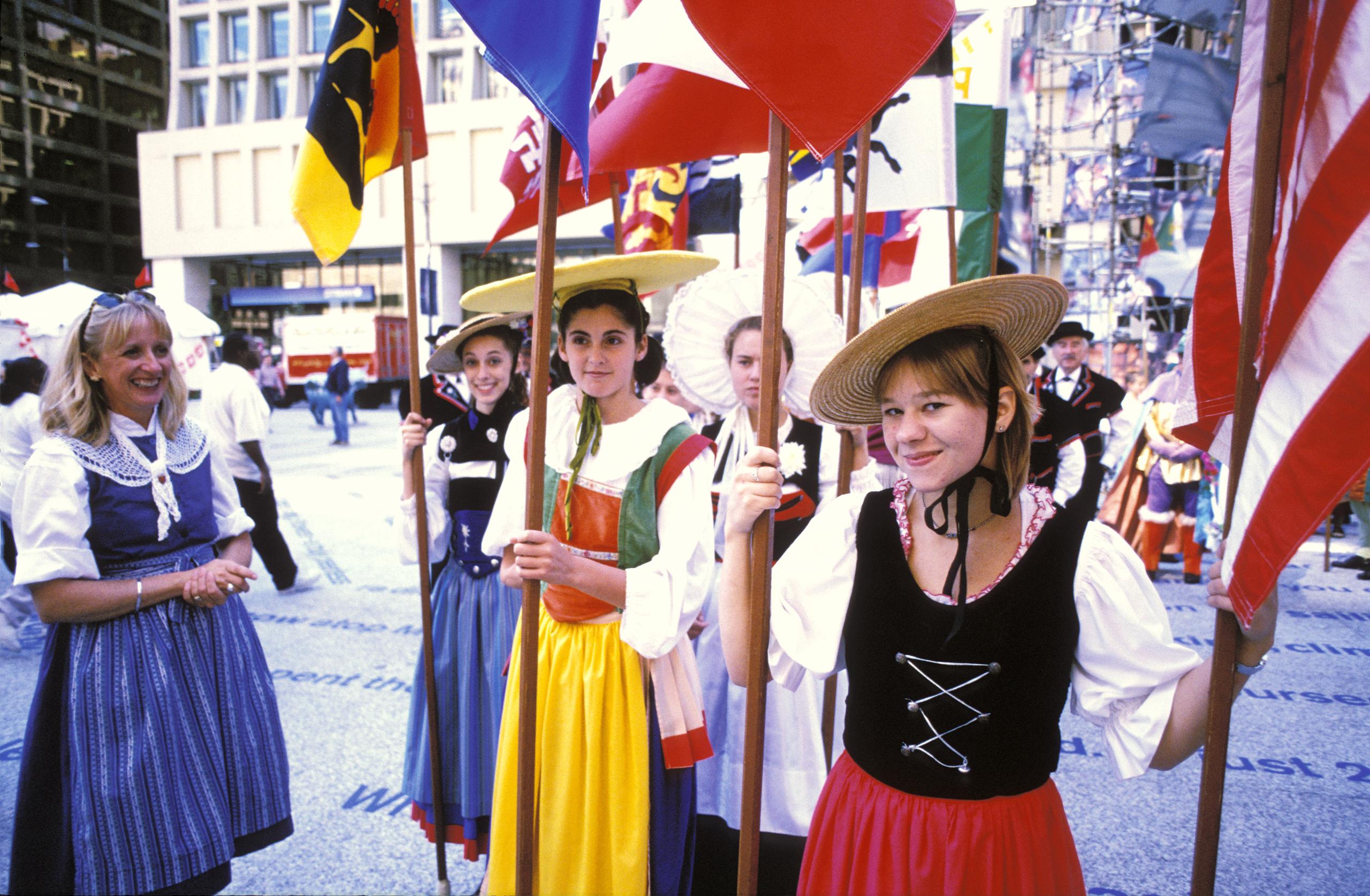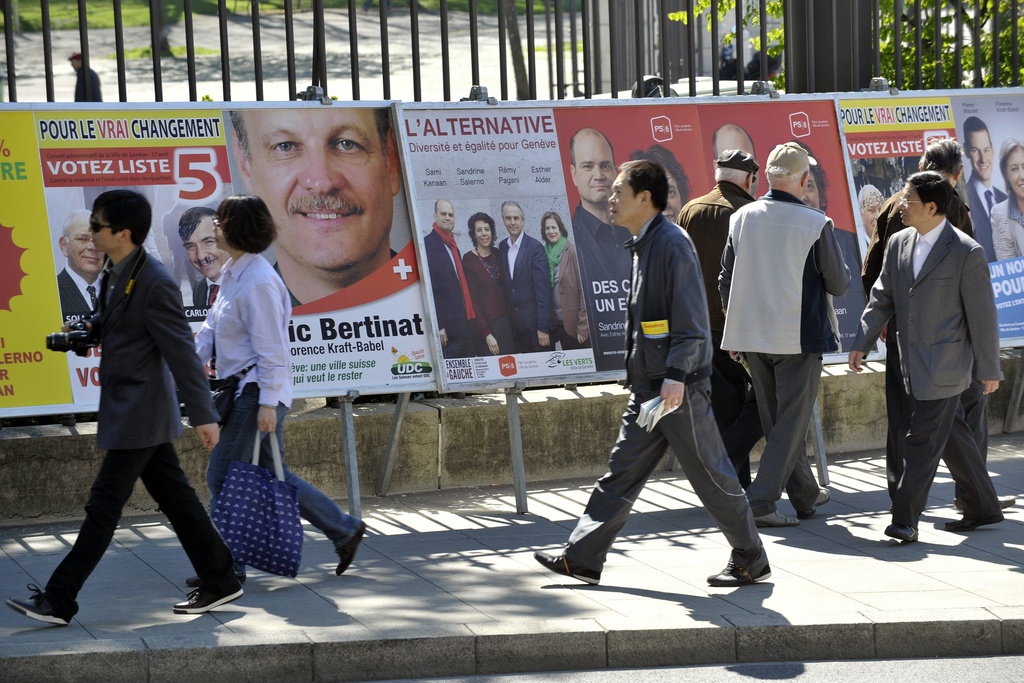Party strongholds and political battlefields 1971−2011
From the fight between the Swiss People’s Party and the Social Democrats in canton Vaud to canton Uri as a traditional stronghold of the Radical Party to a neck-and-neck race in the suburbs of Geneva: the national elections since 1971 are filled with stories.
A closer look at the elections to the House of Representatives on a local level from 1971 onwards reveals 24 different political parties vying for votes in 11 parliamentary elections held in 2,345 communes over the past 40 years.
There are communes where an individual political party regularly wins more than 80% of the vote. Others undergo a radical change every four years. And then there are communes where a small party has risen to the top over the years – at the expense of others.
From orange to green
The Swiss Broadcasting Corporation (SBC) – swissinfo’s parent company – has analysed the results of the elections to the House of Representatives – one of the two parliamentary chambers – from 1971 to 2011. The detailed data from the Federal Statistics Office show that Switzerland’s political landscape resembles a patchwork rug which changes its colours every four years.
An obvious trend across the country is the growing strength of the People’s Party. Renamed in 1971 and traditionally representing farmers and small tradesmen, the party has made remarkable strides.
Until the 1990’s the People’s Party was limited to its traditional strongholds − the cantons Bern and Graubünden. But the 1999 elections saw a breakthrough, with the party winning an additional 7.6% of votes – a landslide victory in Swiss politics.
The party has continued its winning streak in other cantons since: first in Zurich, followed by Thurgau, Schwyz, St Gallen and Schaffhausen. In Vaud, the People’s Party won many seats from the Radical Party in the past two elections and now fights against the Social Democrats to win dominance.
The rise of the People’s Party of course comes at the expense of other parties, notably the Christian Democrats, who held a majority at the local level up to the 1970’s. But today only cantons Lucerne and Valais remain firmly in the hands of the Christian Democratic Party. On the map the colour has changed from orange to green – typically in canton Schwyz.
Steep rise and deep fall
The recent history of Horw, a suburb of Lucerne, shows how the balance of power between the People’s Party and the Christian Democrats has changed fundamentally. The Christian Democratic Party regularly won more than 40% of the vote for decades. That was until the People’s Party entered the race for the first time in 1995 – and landed a political upset, garnering 14% of the vote at once. Now the Christian Democrats have to settle for about 20%.
The Social Democrats are another victim of the success of the People’s Party at a local level. In Arbon, a commune on Lake Constance, the Social Democratic Party traditionally had a 30−40% share of the vote until 1999.
The local chapter of the People’s Party rose from modest beginnings in 1971 to come level with the Social Democrats in 1999. Eight years later the conservative right group clinched 37.5% of the vote while the left won only 22.5%.
Fewer strongholds, more diversity – and the average
As a rule, the times are over when one individual party dominated politics in a commune, except in some remote, mostly mountain regions with majorities of more than 80% of the vote.
Notable examples of continuing political bastions are the commune of Leuk in Valais for the Christian Democratic Party, canton Uri in central Switzerland for the Radicals and the southern Emmental region of canton Bern for the People’s Party.
In contrast, there are many communes where the parties are neck-and-neck, as in the Geneva suburbs. There, the five main political parties from right to left all won about the same percentage of votes in the communes of Versoix, Thonex and Bernex in the 2011 elections.
And which is the most typical Swiss town? Statistically speaking it’s Frauenfeld, in the east of the country. There, the results of the past 11 elections show the smallest difference on average compared to results at a nationwide level.
Adapted from German by Urs Geiser, swissinfo.ch

In compliance with the JTI standards
More: SWI swissinfo.ch certified by the Journalism Trust Initiative












You can find an overview of ongoing debates with our journalists here . Please join us!
If you want to start a conversation about a topic raised in this article or want to report factual errors, email us at english@swissinfo.ch.